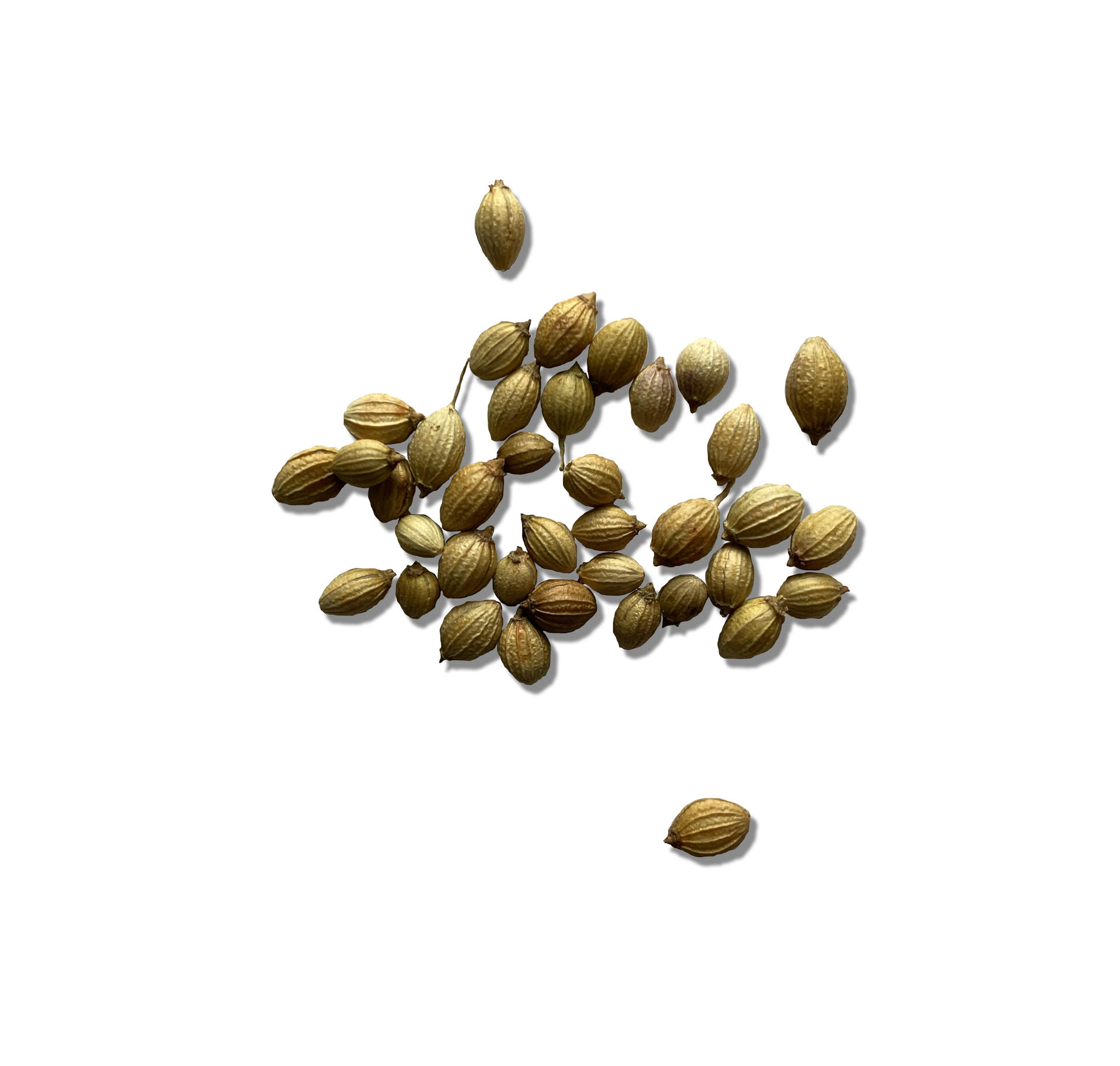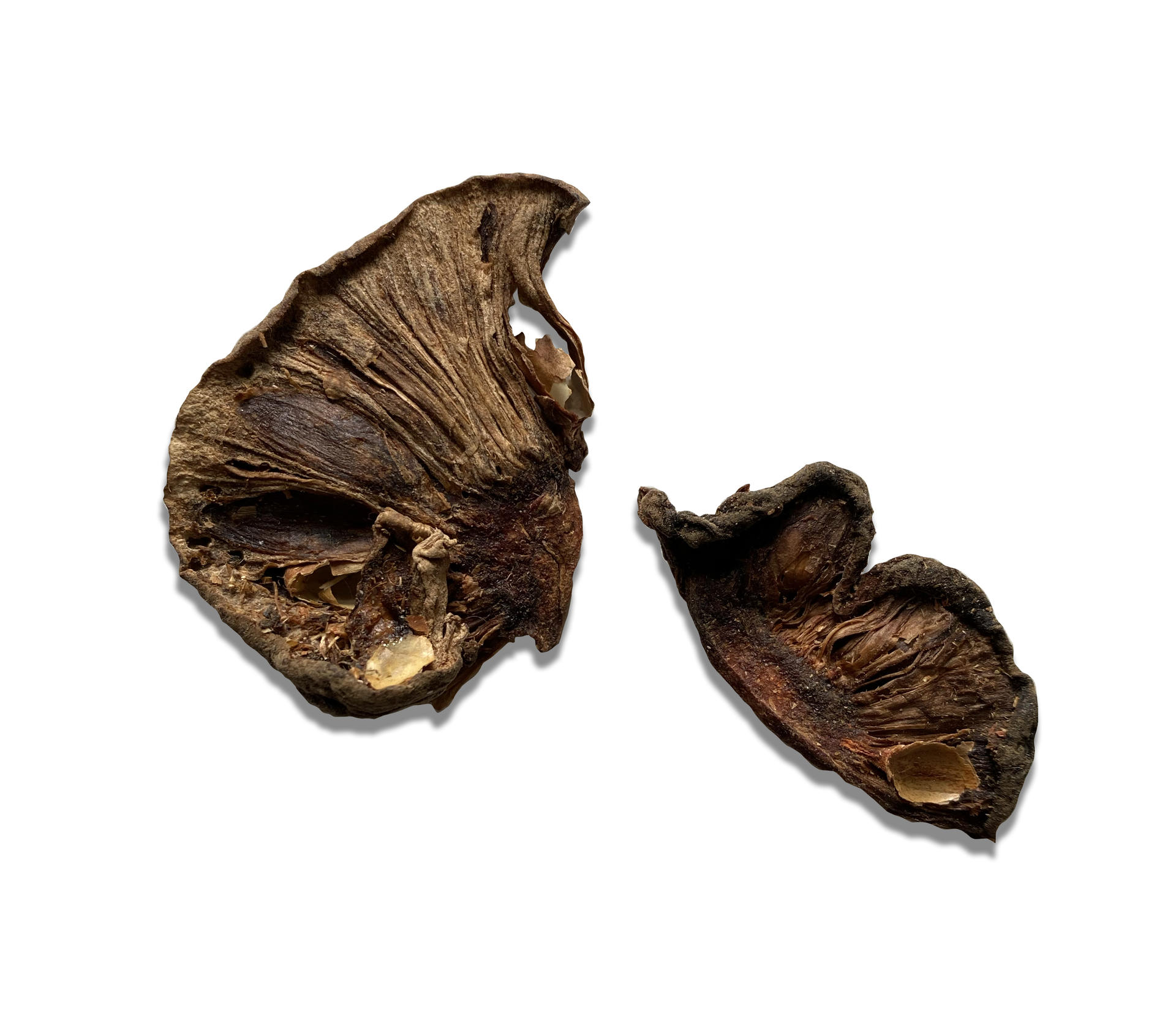Image
Anushka Divecha
Dal and Rice
ABSTRACT
“It seems to me that our three basic needs, for food and security and love, are so mixed and mingled and entwined that we cannot straightly think of one without the others.”
— M.F.K. Fisher, The Art of Eating
I have always been a nostalgic person. I have boxes of old photographs, letters, birthday cards and objects from significant days in my life. I have confetti from different concerts, friendship bracelets and old diaries. While typically not represented by keepsakes, memories of food are some of my strongest. They encompass all five senses, which is perhaps why they are so powerful. Every time I smell a spice or taste something familiar, I am instantly transported to a certain place and time.
As a textile artist, I use materials, textures, imagery, and senses to evoke place and time. This year in particular, I tried to bring a feeling of comfort back to the isolated existence I experienced in Providence in the midst of a global pandemic. Working with spices common in my family’s cooking and incorporating them into a textile allowed me to capture the comfort of scent; just the smell of a spice can trigger fond, powerful memories. Working with the concrete that is so prevalent in the marketplace and feeling its gritty texture at once took me back to the streets of Bangalore. Weaving with Sisal and Manila rope was reminiscent of the coconut trees I could see from my kitchen window. Through my current work, I want to not only comfort myself, but invite others to experience the warmth of my bustling kitchen and all the memories associated with it. These textiles are the materialization of nostalgia through food.
Image
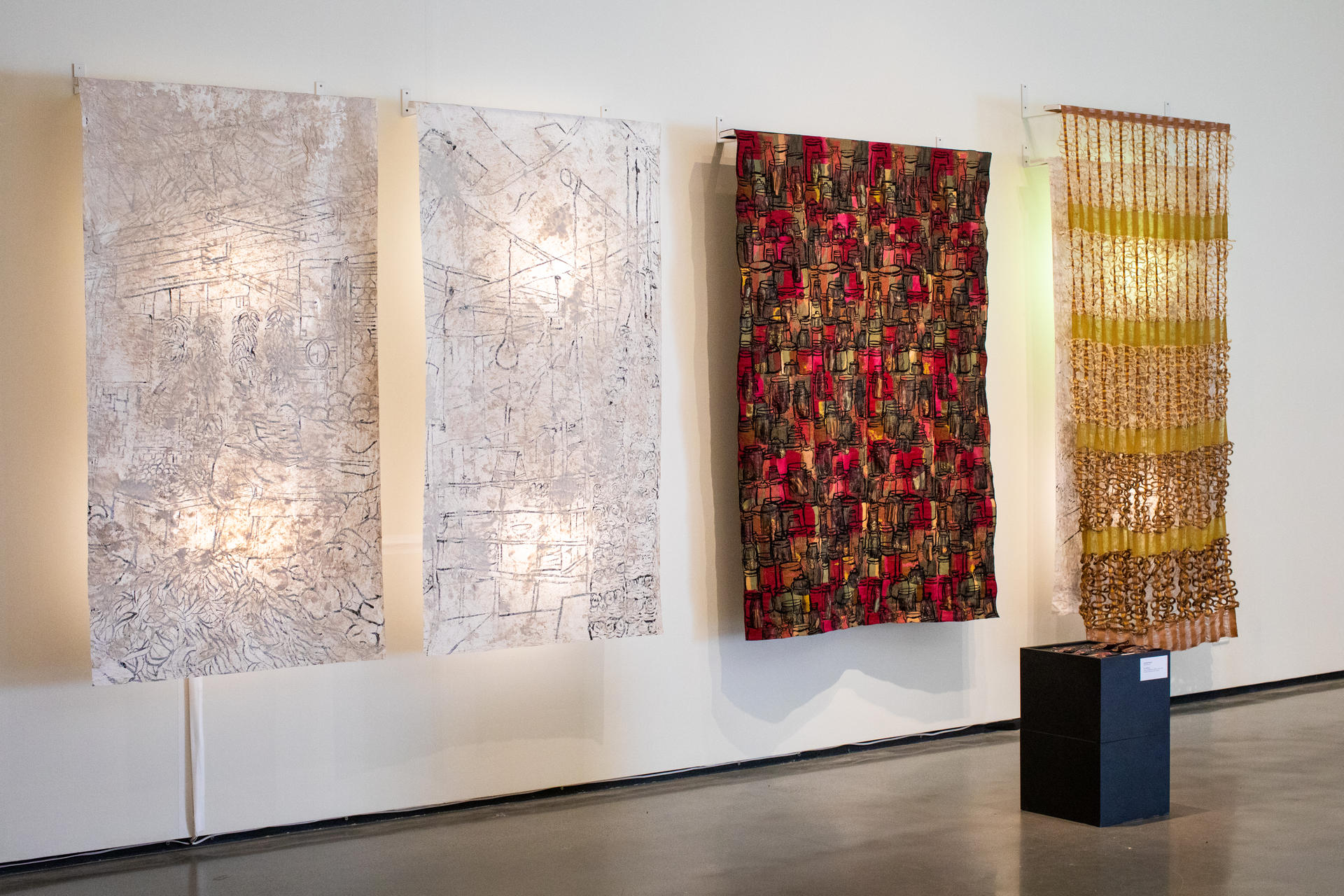
Image
Aromatics
Spun Rayon, Monofilament, Bay Leaves, Cardamom, Chilli, Cinnamon, Cloves, Coriander Seeds, Javentri, Kokum, Pepper, Star Anise
4.5ft x 6.6 ft
2021
Image
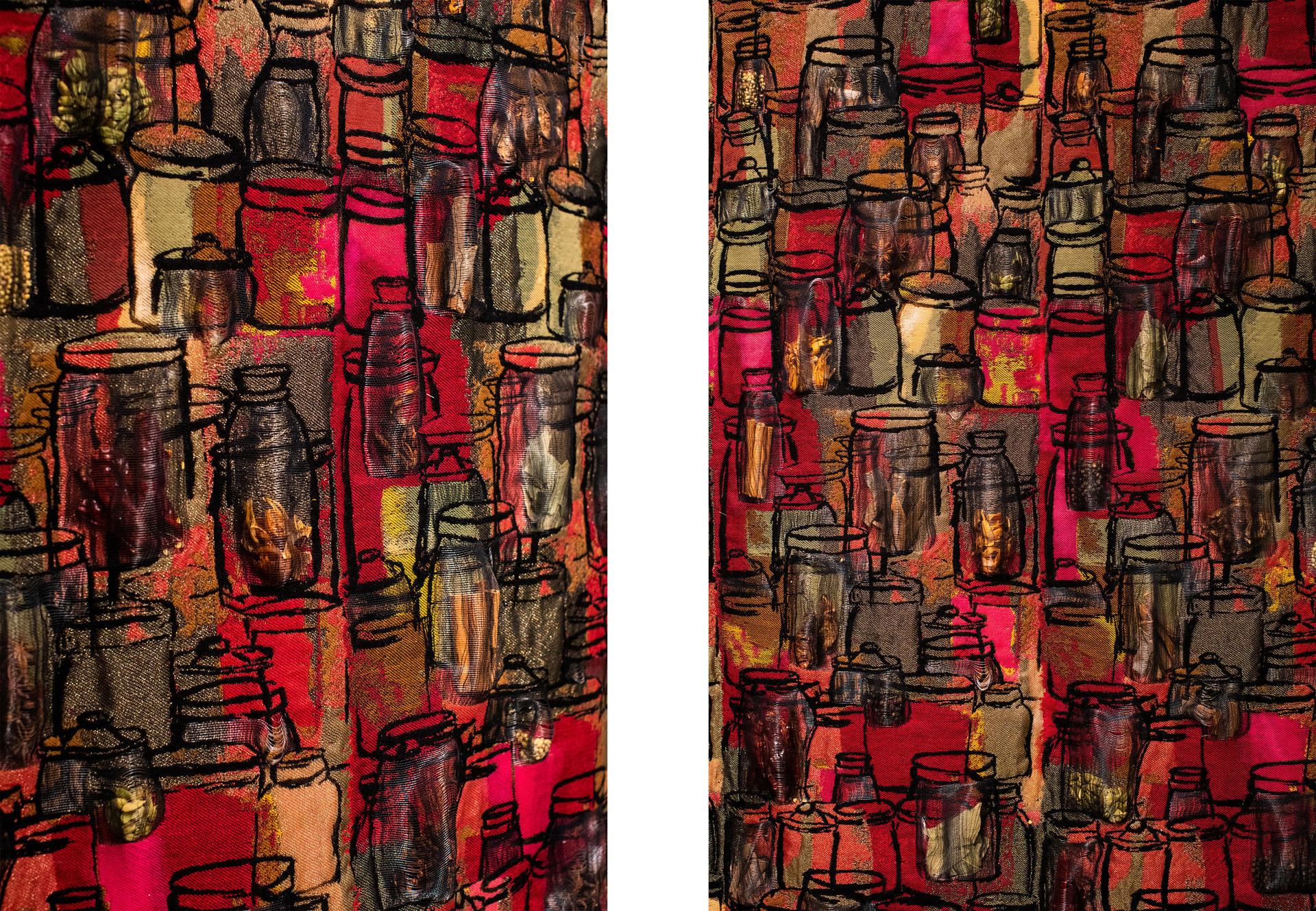
This textile woven on the Jacquard Loom is stuffed with spices used in my family's cooking. The illustrative, haphazard jars, akin to shelves in our kitchens, hold the spices. The different spices sometimes blend in with the background or stand out, creating a sort of alchemy, reminiscent of cooking. I envisioned this as a wall hanging or wall covering that would fill up a space with warmth and envelope it in the aroma of the spices.
Image

Woven with a satin weave and gauze for the jars to form pockets, small slits had to be made behind the fabric to stuff the spices. After stuffing, labels were made at the back to ensure that all pockets were stuffed, but also to make sure that spices were spread out and were not repeated next to each other.
Image
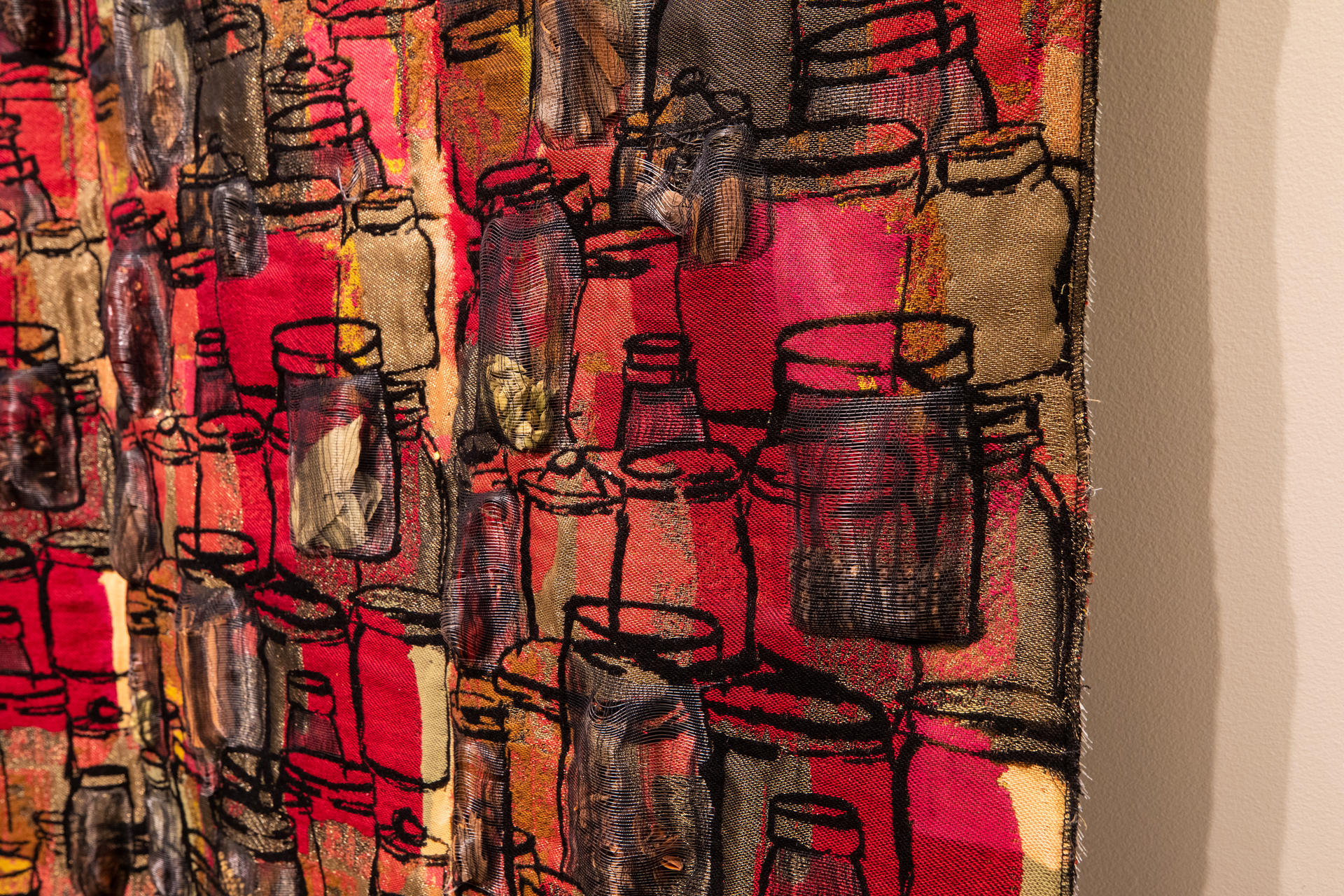
Image
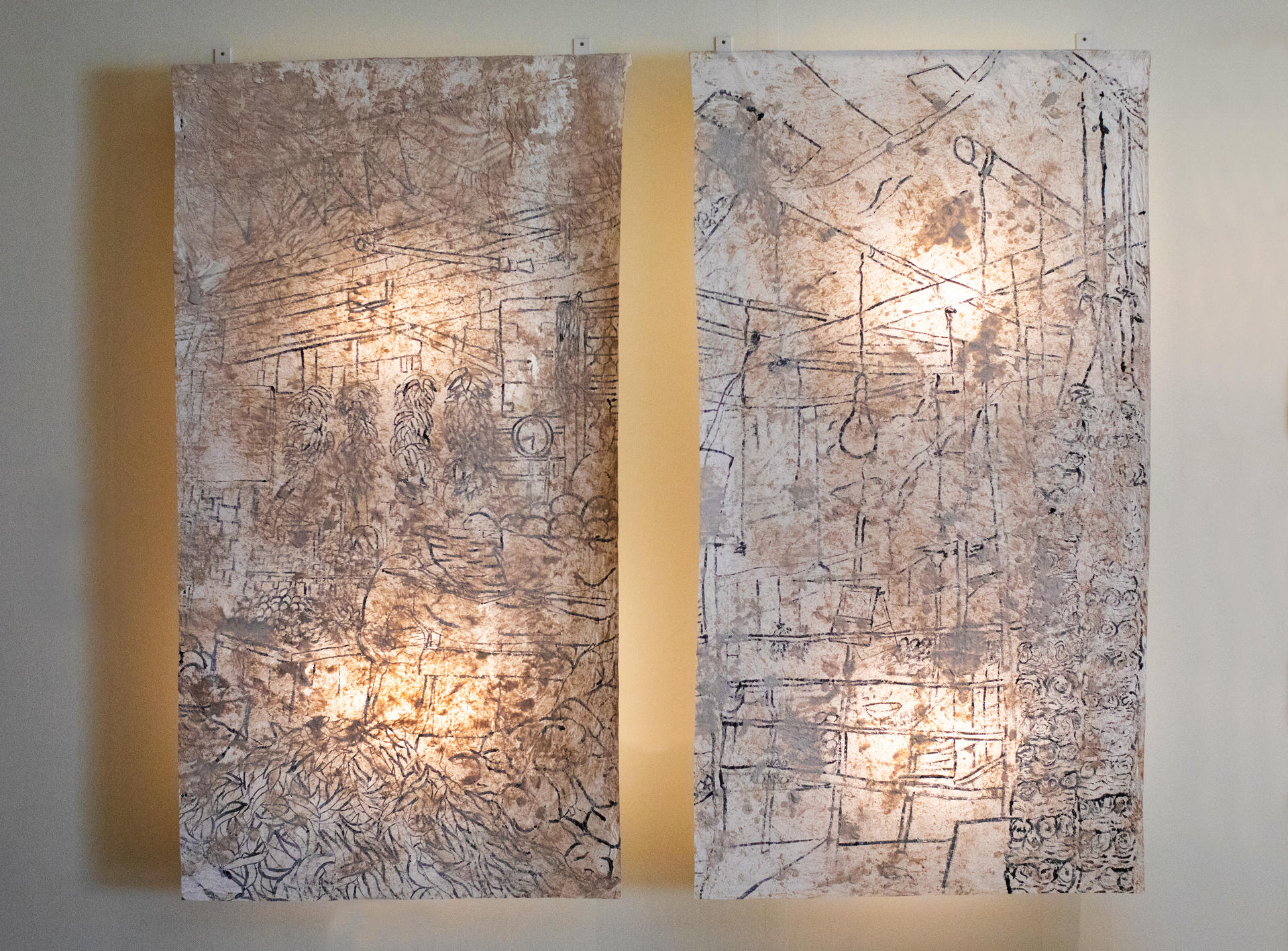
Bazaar
White Concrete, Muslin, Dye
3.3 ft x 6 ft each
2021
Image
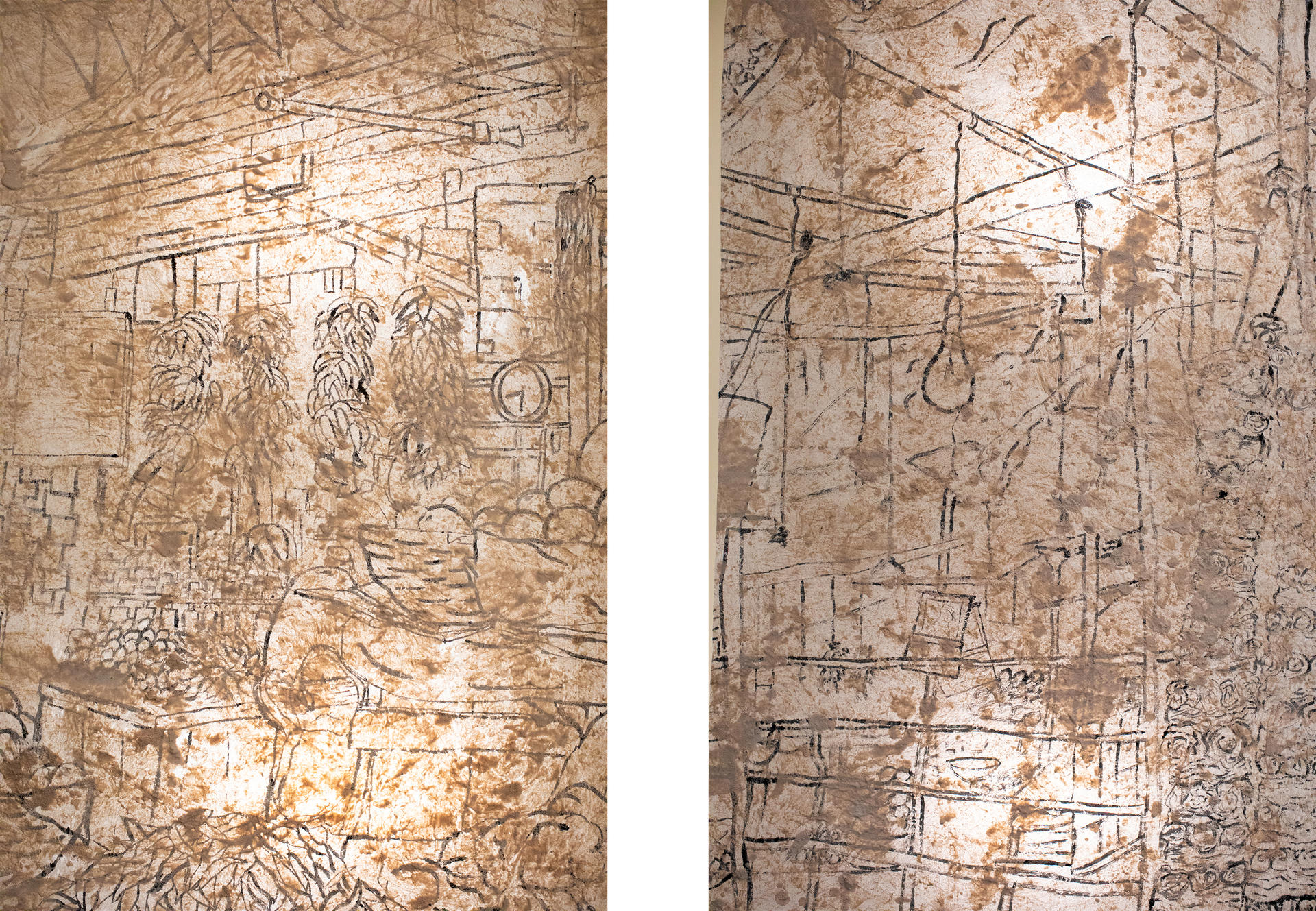
Cooking at home is so much more than just the dish on the plate, it is about the context of when or how the food is being prepared. There is enriched symbolism acquired when one eats food from home, because it reminds one of deep unconscious memories from one's childhood- eating as a family and being nourished. When I think of eating at home, my nostalgia doesn't start and stop at the kitchen or the table, it involves going to the bustling marketplace in Bangalore to procure ingredients. This diptych was made by layering concrete- A material heavily prevalent in the bazaar I frequent back home- on to muslin fabric.
Image
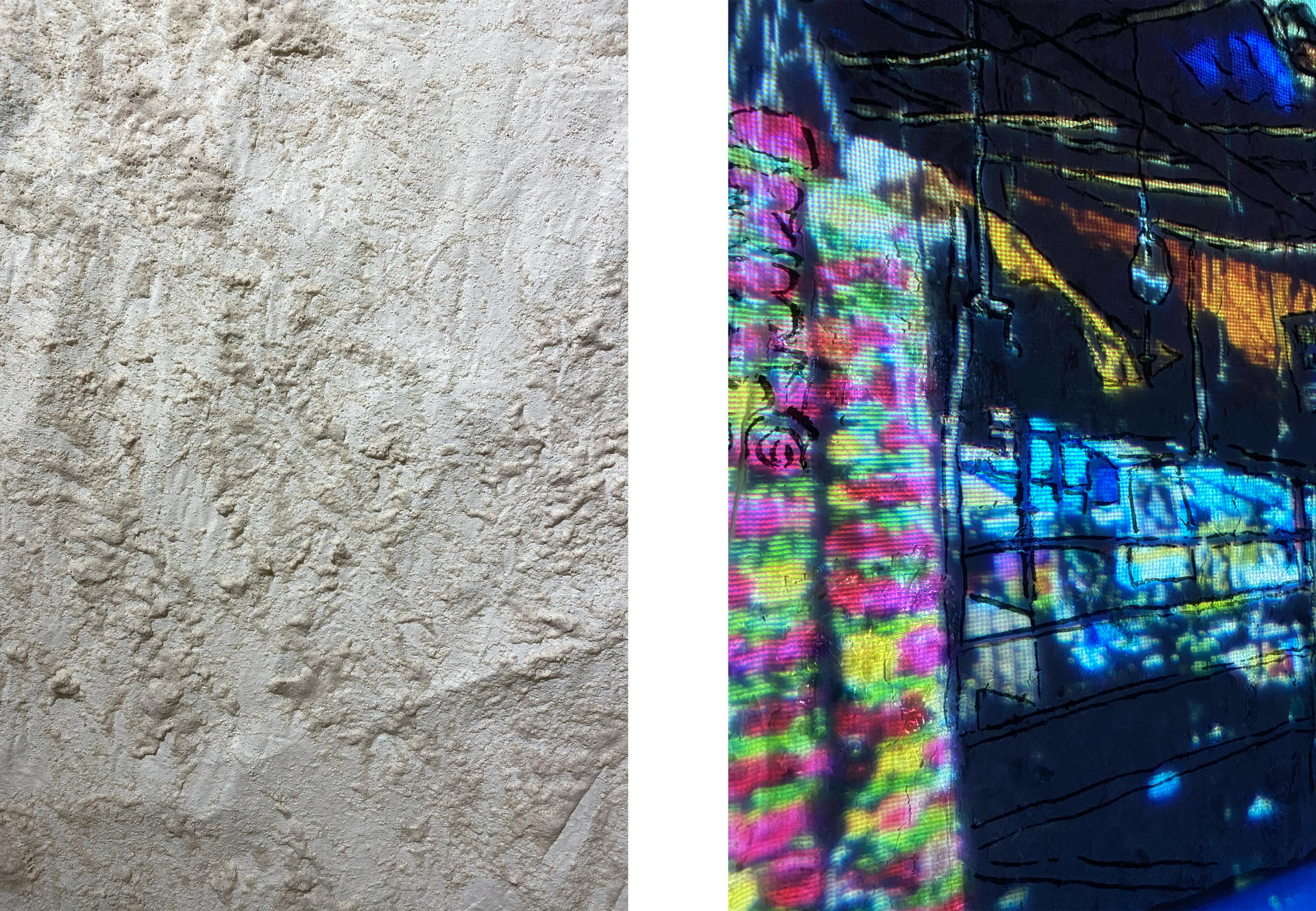
Concrete, often seen as an opaque, hard, cold material, when combined with fabric has an incredible luminosity when shown against light. I wanted to play with the opacity and translucency of the material by painting with dye on the back of the fabric. I projected photographs of the marketplace on to the back of the fabric and painted with dye, alternating between thin and thick lines. I then lit the pieces from behind with a warm, glowing light, which made the material come alive. Some lines were interrupted and hidden by layers of thick concrete and some lines were clearly visible where the concrete was thin.
Image
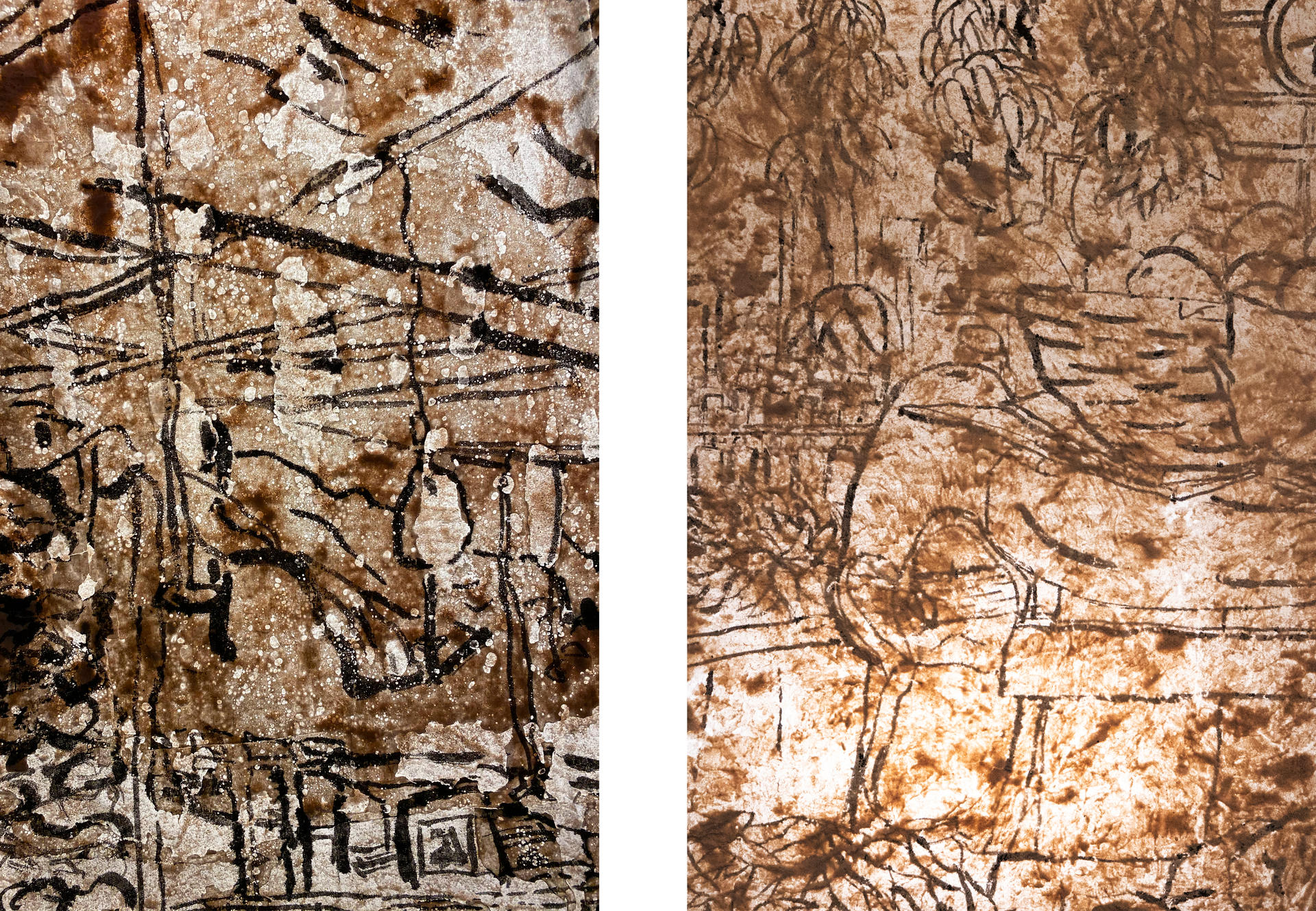
Image
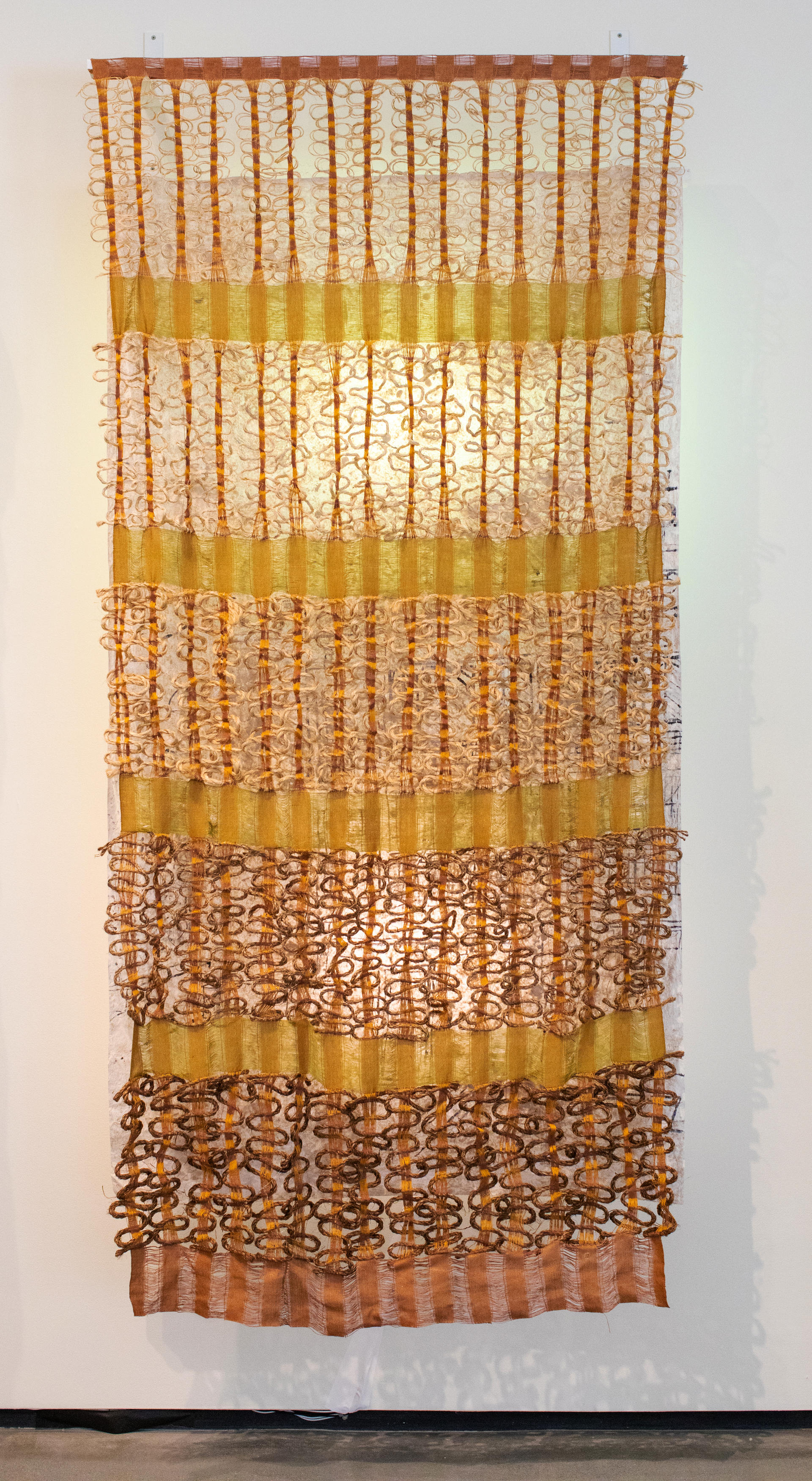
From My Kitchen, I See Coconut Trees
Cotton, Sisal Rope, Manila Rope, Jute
3.8 ft x 8 ft
2021
Image
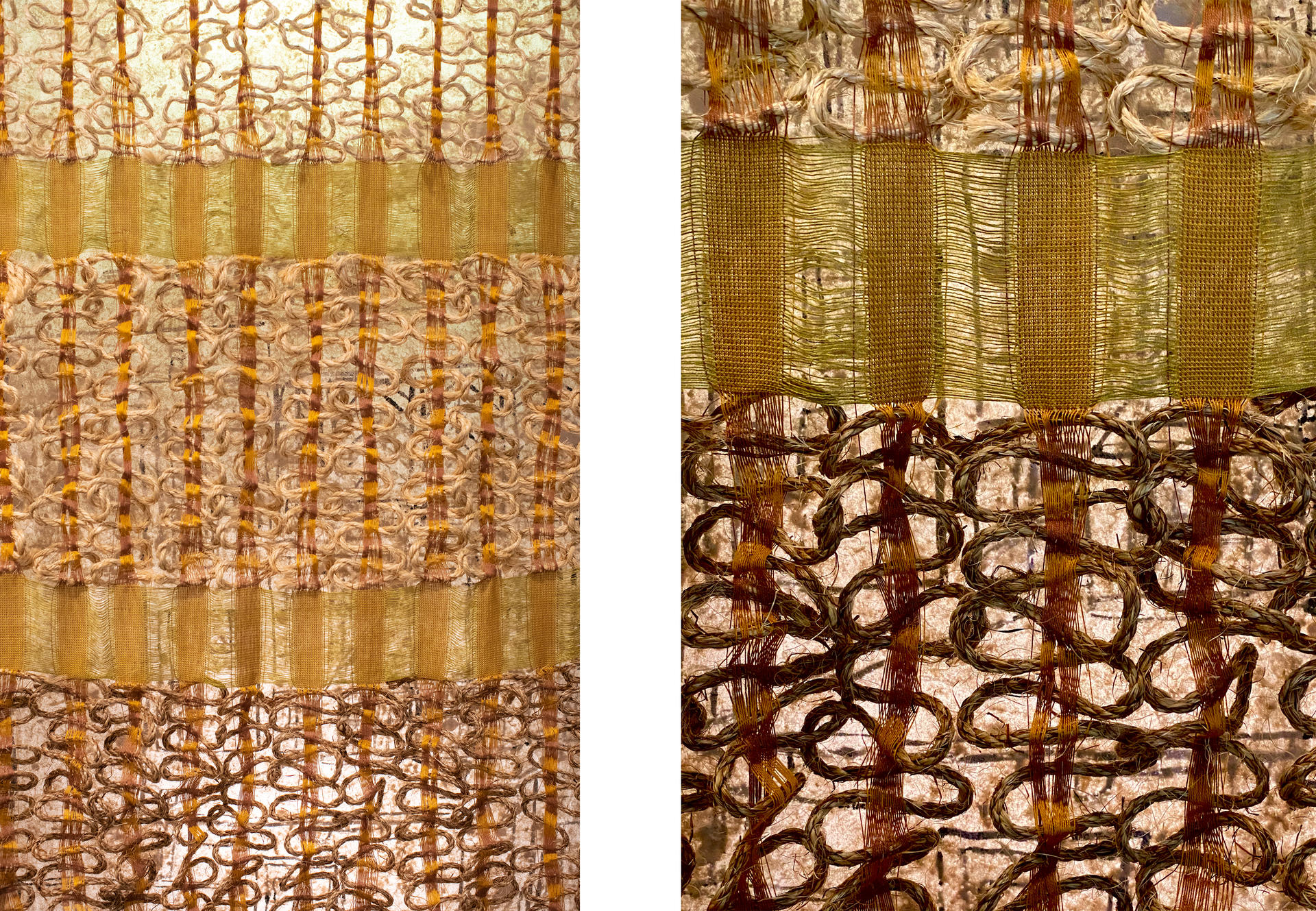
From my kitchen at home you can see coconut trees through the window. Swaying, rustling, barely still. You can hear the leaves talk to each other while you make your morning chai and you can hear them at night when you wipe down the counter. They have been there for years, watching the neighbourhood change, watching small houses turn into buildings and big stores replace small ones. Now from my kitchen, I see a parking lot. I miss those trees. But when I cook my mother’s recipes, when the asafoetida sizzles in hot oil, I can almost hear them. Swaying, rustling, barely still. Watching me grow.
Image
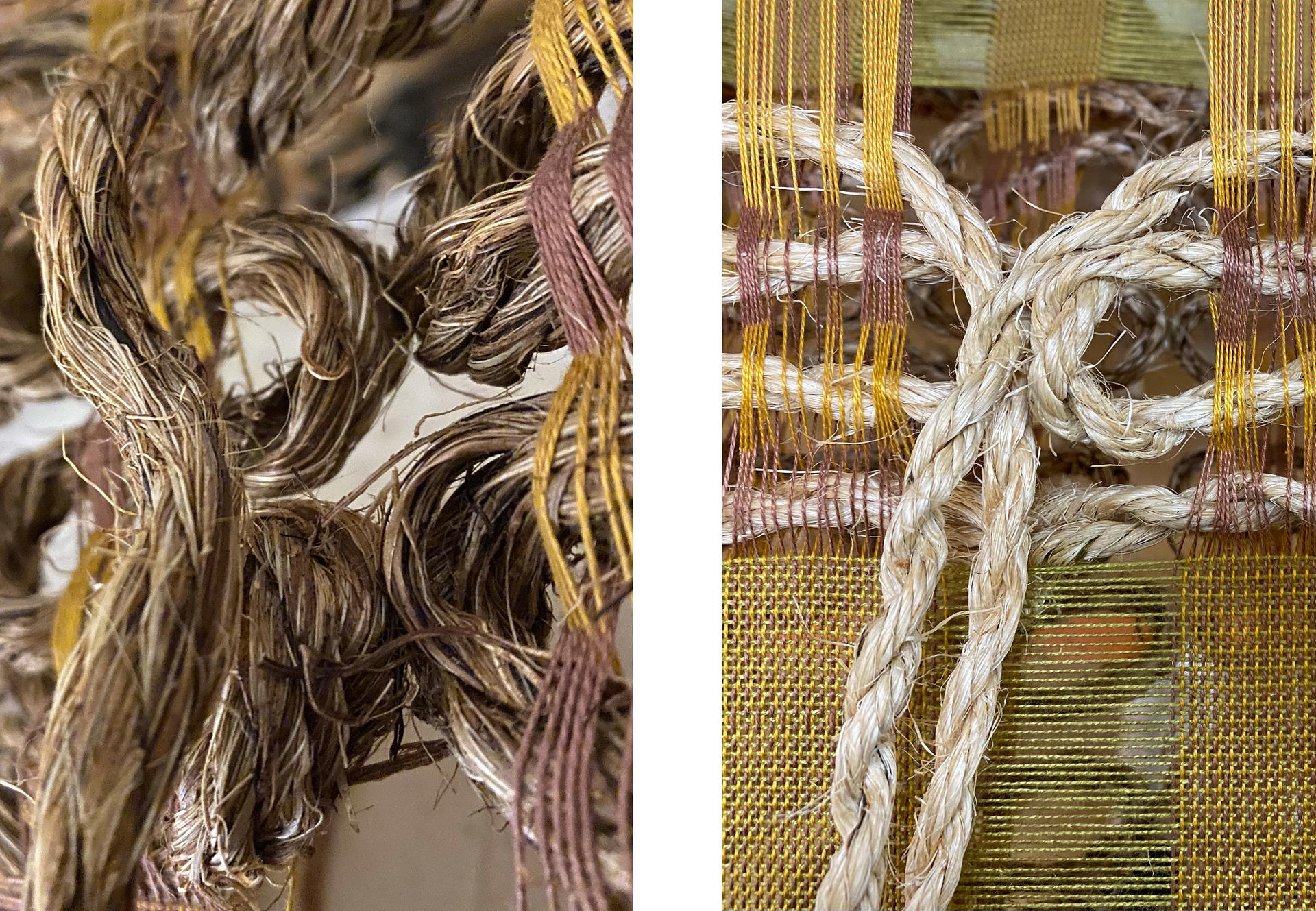
This piece, inspired by the coconut trees I can see from my kitchen at home, was woven on a handloom. I wove with sisal rope, manila rope and jute which represented the natural, organic trees, while the grid-like, structured cotton was reminiscent of my window. I wove on a spaced warp and made the rope weave in and out and interlock at intervals to give it more structure, as well as to depict the interlocking of the palm fronds. The bottom of the textile is woven with thicker, denser, darker manila rope, like the thick tree trunks, and as you go up, the materials get thinner and lighter, ending with thin jute at the top.
Image
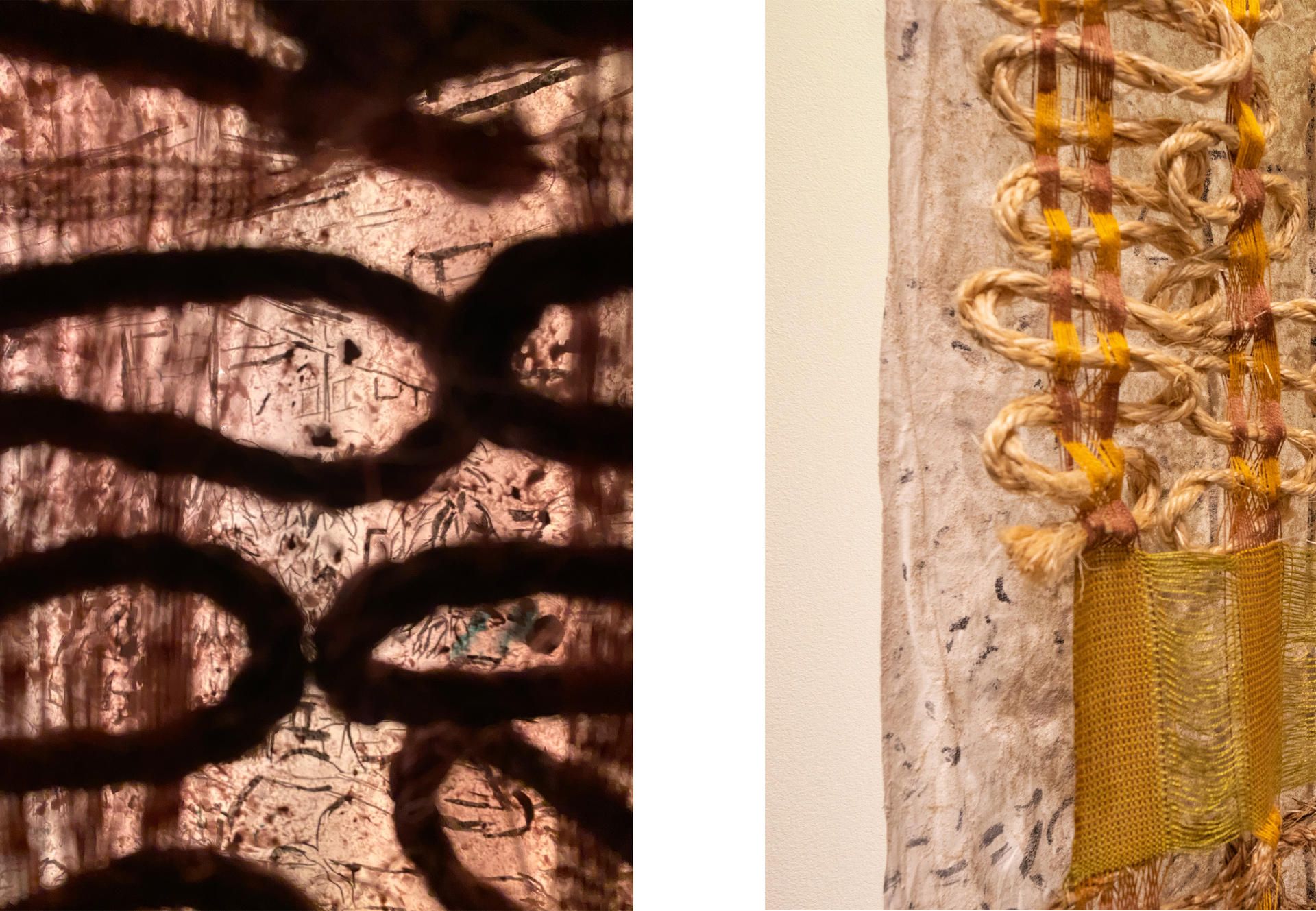
For the installation, I hung a concrete piece that was back lit behind this handwoven piece to represent the city beyond the window and the trees. I wanted the lights to change and represent the different times of day- blue, cold light in the morning, warmer light in the afternoon and dimmer, darker light in the evening.
Image
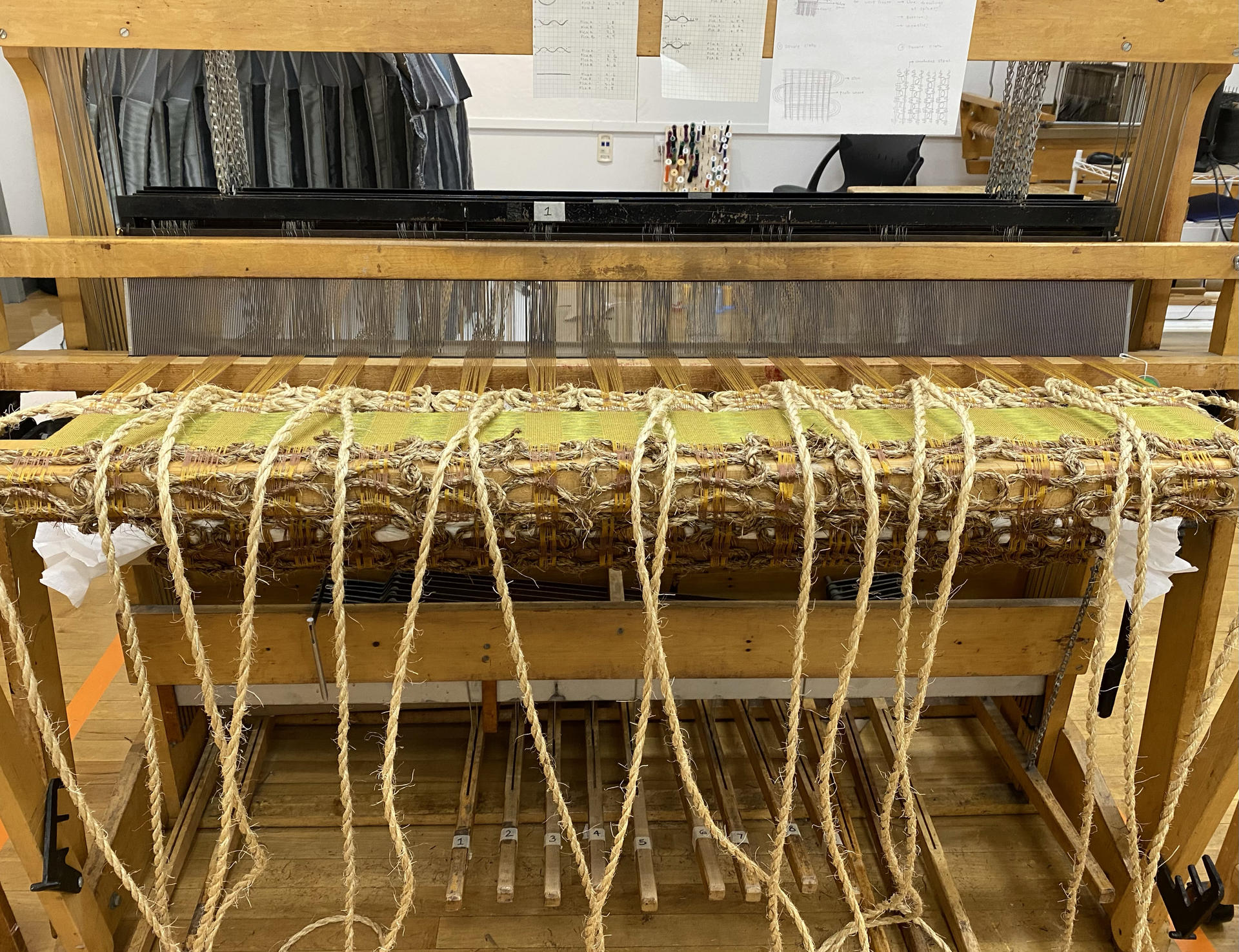
Image
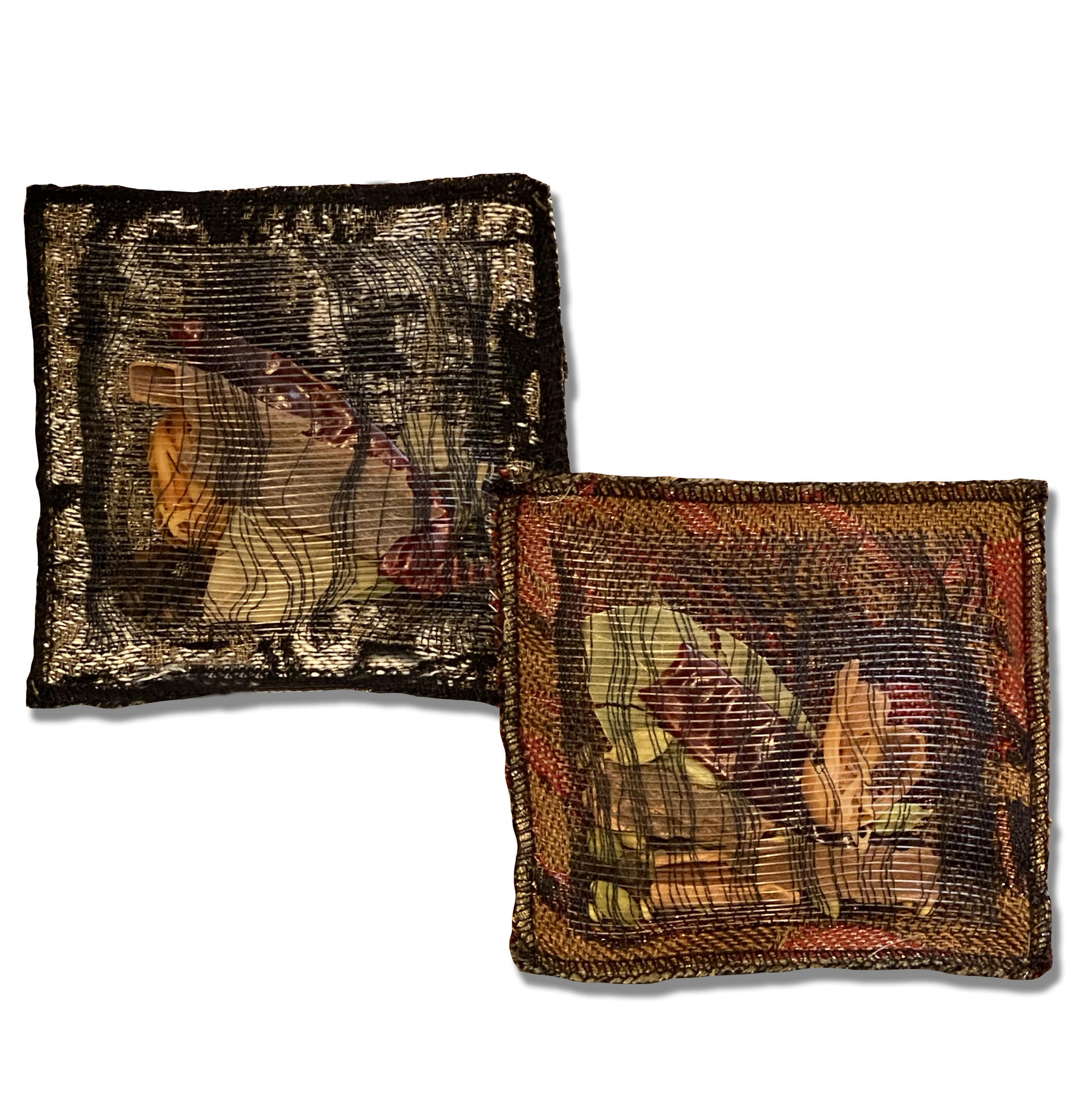
An Offering
Spun Rayon, Monofilament, Bay Leaves, Cardamom, Chilli, Cinnamon, Cloves, Coriander Seeds, Javentri, Kokum, Pepper, Star Anise
4 in x 4 in each
2021
Image
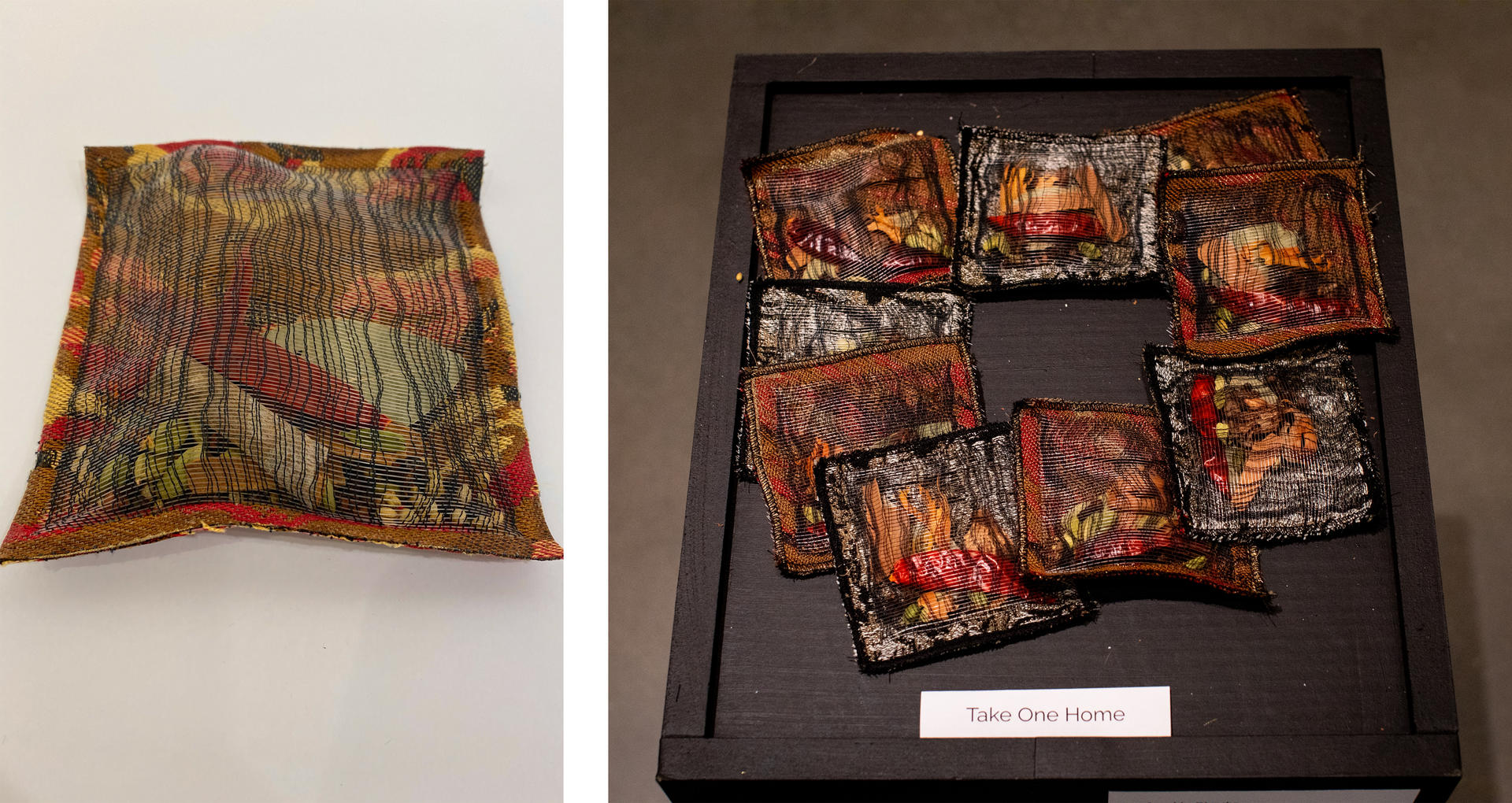
Through my textile work, I wanted to invite people in to my home and give them a small experience of what it was like to be in my kitchen. Since cooking and eating is so much about sharing, I wove small pouches on the jacquard loom and stuffed them with spices as an offering. Whoever came and saw my work would be able to take a small piece of it back home with them.
Image
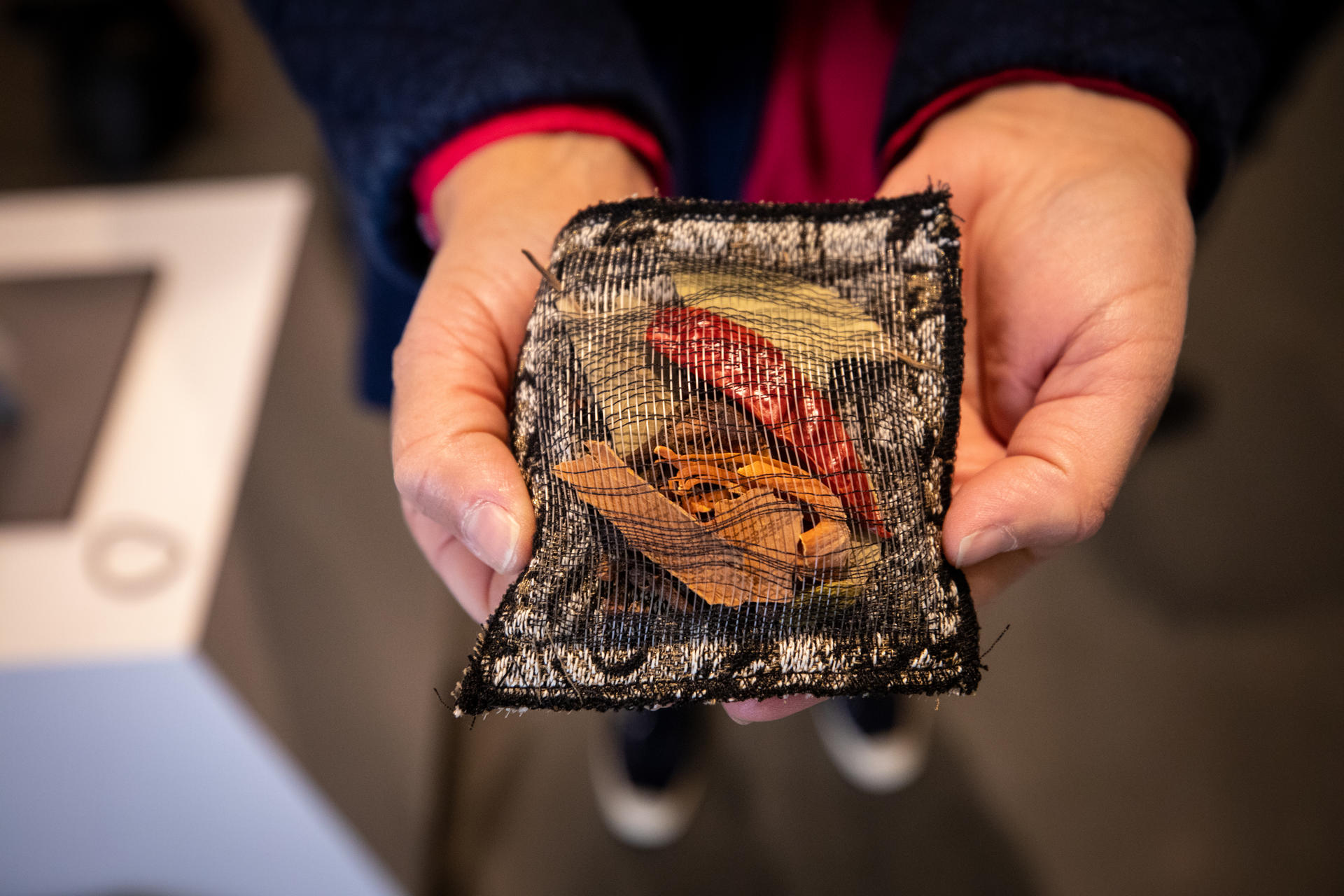
Photographs: Josephine Sittenfeld and Anushka Divecha

